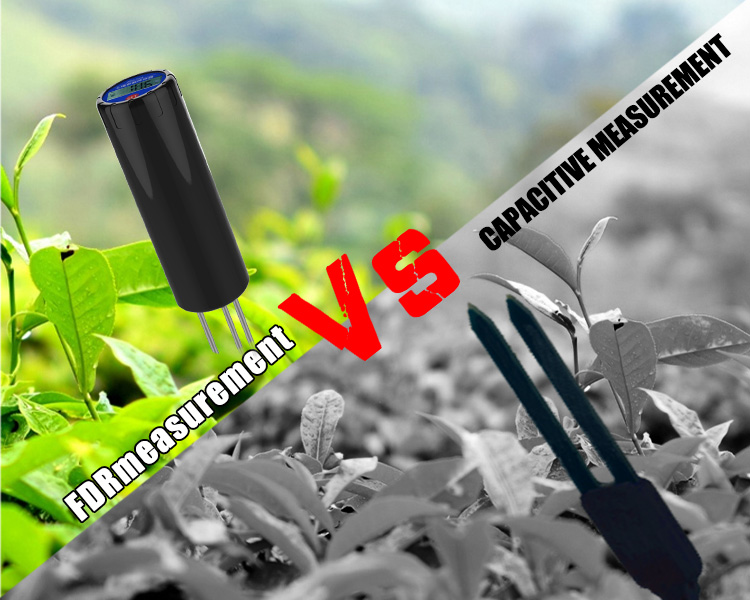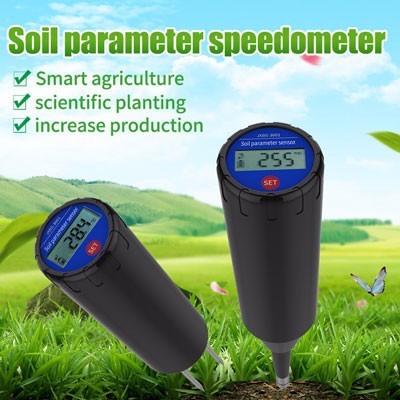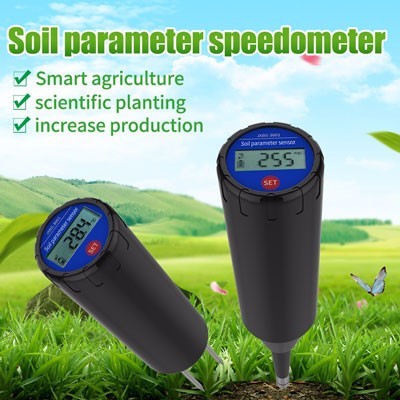Soil is a fundamental component of our planet's ecosystem, playing a crucial role in supporting plant growth, regulating water resources, and storing carbon. As our understanding of soil science evolves, harnessing advanced technologies becomes increasingly vital in optimizing agricultural practices and effectively monitoring environmental conditions. Soil sensors, with their ability to provide real-time data on various soil parameters, are revolutionizing agriculture and environmental monitoring. This article explores the power of soil sensors and their transformative impact on these fields.

Understanding Soil Sensors:
Soil sensors are innovative devices specifically designed to measure and monitor various soil properties. With their advanced technology, they can accurately measure critical parameters such as moisture content, temperature, nutrient levels, pH, salinity, and even soil compaction. These sensors are typically embedded in the ground at different depths, allowing for comprehensive and continuous monitoring of soil conditions.
Precision Agriculture and Yield Optimization:
One of the significant benefits of soil sensors is their application in precision agriculture. By providing real-time data on soil moisture, nutrient levels, and other relevant parameters, farmers can make informed decisions about irrigation, fertilization, and crop management. This allows for optimized resource allocation, reducing water and fertilizer waste while maximizing crop yield. With accurate information at their fingertips, farmers can ensure that crops receive the right amount of water and nutrients at the right time, leading to healthier plants and increased productivity.
Water Management and Conservation:
Water scarcity is a growing global concern, making effective water management and conservation paramount. Soil sensors enable precise irrigation scheduling by monitoring soil moisture levels. By determining when and how much water is required, farmers can avoid over-irrigation, minimize runoff, and reduce water consumption. This not only conserves water but also prevents leaching of nutrients, preventing potential environmental pollution. The data collected by soil sensors can be integrated with automated irrigation systems, ensuring water is used efficiently and sustainably.
Nutrient Management and Fertilizer Optimization:
Proper nutrient management is essential for healthy plant growth and minimizing environmental impact. Soil sensors provide real-time data on nutrient levels in the soil, allowing farmers to accurately assess the status of essential elements such as nitrogen, phosphorus, and potassium. By precisely measuring nutrient availability, farmers can optimize fertilizer application, reducing wastage and potential pollution of water bodies. Adjusting fertilizer usage based on accurate readings from soil sensors ensures that crops receive the necessary nutrients while minimizing the risk of nutrient imbalance or deficiency.
Soil Health and Conservation:
Maintaining soil health is crucial for long-term agricultural sustainability and environmental preservation. Soil sensors play a significant role in assessing soil quality by monitoring parameters such as pH, electrical conductivity, organic matter content, and compaction. This information helps farmers identify soil degradation issues and implement appropriate remediation measures. By monitoring soil conditions and understanding changes over time, farmers can adopt conservation practices like cover cropping, crop rotation, or tillage reduction to improve soil fertility and prevent erosion.
Early Detection of Soilborne Diseases and Pests:
Soilborne diseases and pests can significantly impact crop yield and quality. Soil sensors aid in early detection of these issues by monitoring and analyzing soil conditions. Changes in temperature, moisture, and other parameters can indicate the presence of pathogens or pests. Timely identification allows farmers to implement targeted control measures, reducing the use of pesticides and minimizing damage to crops. By continuously monitoring soil conditions, farmers can detect potential problems before they escalate, preventing substantial losses.
Environmental Monitoring and Land Rehabilitation:
Beyond agriculture, soil sensors are instrumental in environmental monitoring and land rehabilitation efforts. They provide valuable data for assessing the impact of land-use practices, urbanization, and industrial activities on soil health and quality. By collecting information on soil contamination, erosion, and pollution, soil sensors help guide land rehabilitation strategies and enable sustainable land management decisions. Monitoring soil conditions in environmentally vulnerable areas such as wetlands or forests helps preserve biodiversity and protect fragile ecosystems.

Integrating Soil Sensor Data with Digital Platforms:
The power of soil sensors is magnified when their data is integrated with digital platforms and analytical tools. By combining sensor data with satellite imagery, geospatial mapping, and weather information, comprehensive insights can be obtained for effective decision-making. Artificial intelligence and machine learning algorithms can analyze complex datasets, provide accurate predictions, and recommend optimal management practices. Digital platforms also enable farmers and environmental managers to access real-time soil data remotely, facilitating timely intervention and support.
Challenges and Future Perspectives:
While soil sensors offer immense potential, several challenges need to be addressed for wider adoption. The cost of sensors, data management, sensor calibration, and standardization are some of the issues that need attention. Continued research and collaboration between scientists, manufacturers, policymakers, and farmers are essential for developing more affordable, user-friendly, and robust sensor technologies. Furthermore, expanding the use of soil sensors to smallholder farmers and resource-limited regions will democratize access to advanced agricultural practices and environmental monitoring.
Conclusion:
Soil sensors are revolutionizing agriculture and environmental monitoring by providing real-time data on crucial soil parameters. Their application in precision agriculture optimizes resource allocation, enhances crop yield, and promotes sustainable practices. By monitoring soil moisture, nutrient levels, and other factors, farmers can make informed decisions about irrigation and fertilization, reducing waste and environmental pollution. Soil sensors contribute to soil health assessment, early detection of diseases and pests, and facilitate land rehabilitation efforts. Integrating sensor data with digital platforms enhances decision-making and support systems. While challenges remain, the future of soil sensors is promising, with continued innovation and collaboration paving the way for sustainable agriculture and environmental stewardship.







